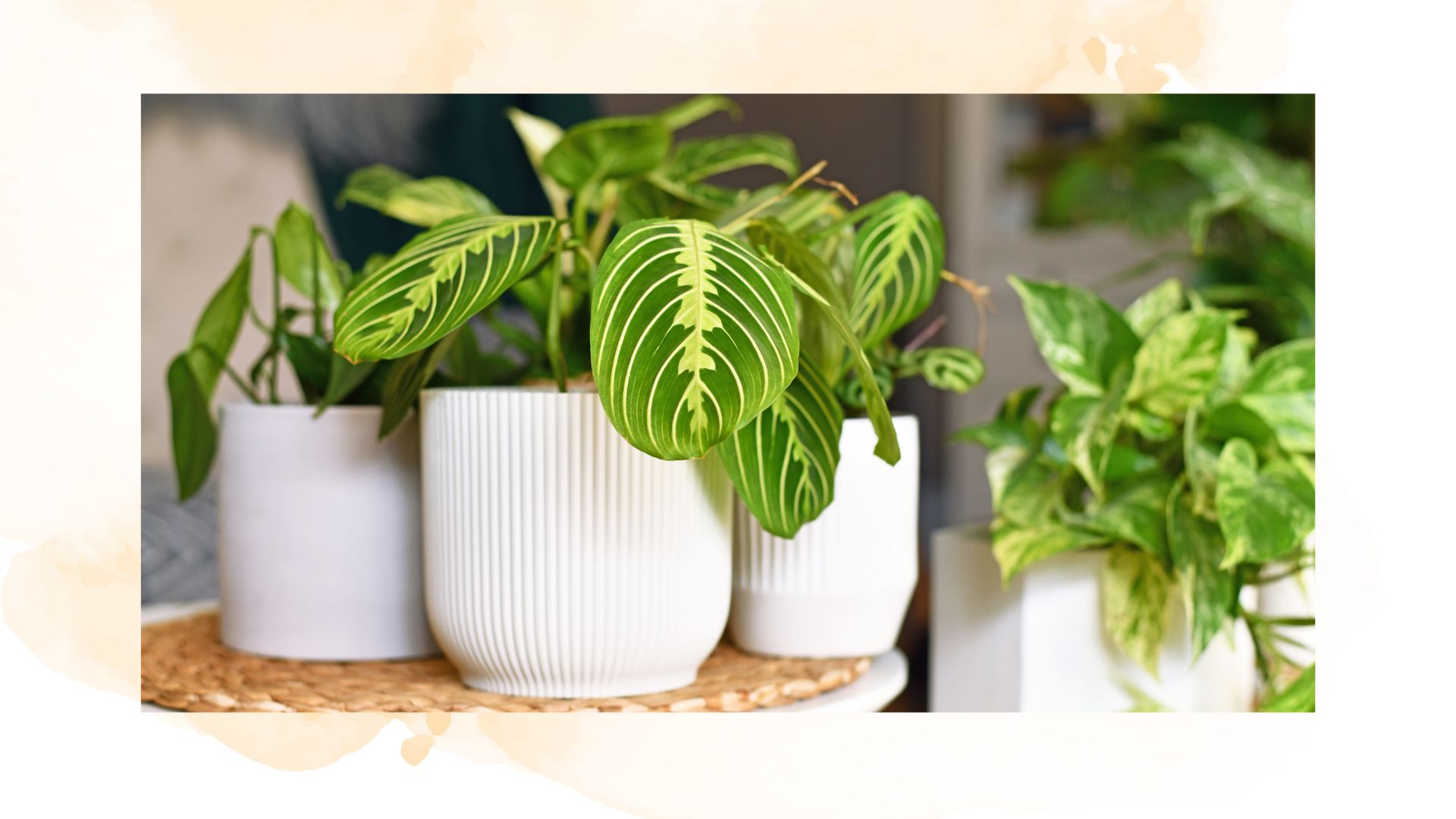
As one of the more unique houseplants, caring for the prayer plant can be somewhat mysterious, especially considering its native tropical conditions. However, if you're up for the challenge we spoke to plant experts for their foolproof guide to keep the vibrant species happy in your home.
Knowing how to care for indoor plants isn't exactly a walk in the part, as each species requires a slightly different care routine. For instance, knowing how to look after a monstera plant probably won't help you master caring for a bonsai tree because each has unique needs.
This is why it's important to know your plant's specific requirements, even more so when it's an unusual variety like the prayer plant. Luckily, the plant experts reveal all you need to know to help yours thrive.
How to care for a prayer plant: an expert guide
Prayer plants require a little more TLC than caring for a peace lily, which is one of the easiest houseplants to keep alive.
"Caring for a prayer plant is a rewarding experience for houseplant enthusiasts," says Petar Ivanov, garden and plant expert. "Known for its stunning, vibrant foliage and unique ability to fold its leaves upward at night, mimicking hands in prayer, this tropical beauty adds charm to any indoor space."
He adds, "With the right care, a prayer plant can flourish as a captivating centrepiece in your home – whether you're a seasoned plant parent or a beginner, this guide will help you keep your prayer plant healthy and happy."
1. Choose the right spot in the sun
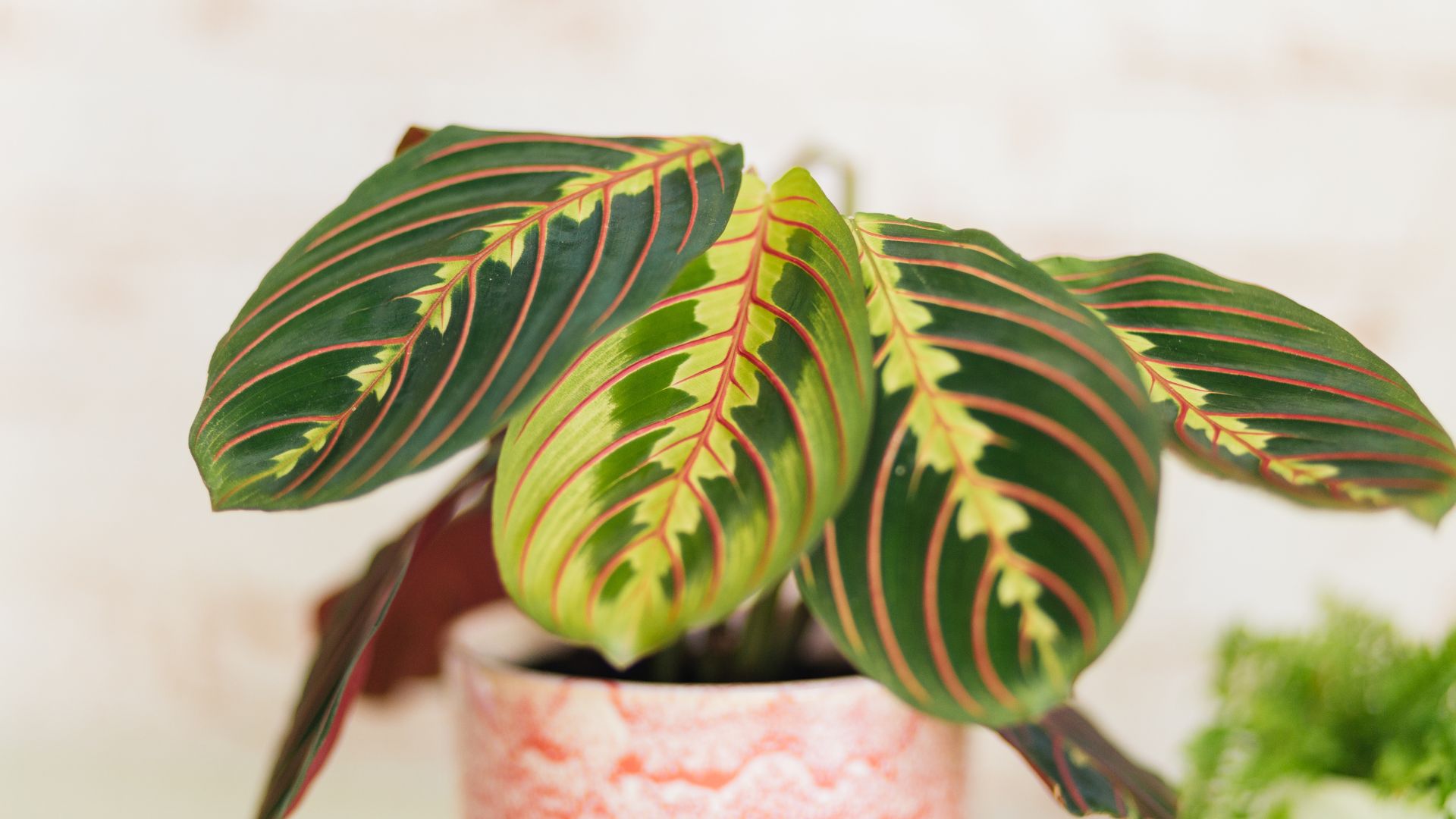
Giving your plant the wrong amount of sunlight is one of the most common houseplant mistakes and can lead to major health issues for them. It's one of the main reasons your peace lily can have brown tips.
"Prayer plants thrive in bright, indirect sunlight. Avoid placing them in direct sunlight as this can scorch the leaves. They can tolerate lower light conditions, however, this may slow down their growth a little bit," explains Fiona Jenkins, plant expert at MyJobQuote.
2. Establish a watering routine
It can be quite a challenge to master your houseplant watering routine, especially if you have a varied selection of plants in your home. But being organised and using watering stakes to help you can make all the difference.
Graham Smith MCIhort, horticulture expert at LBS Horticulture says, "The soil of your prayer plant should be kept moist at all times from spring to autumn, but do not allow it to be wet. Ideally, water it little and often, and allow any excess water to drain away completely."
He goes on to say, "Prayer plants are sensitive to the chemicals in tap water, so it is better to use distilled water, filtered water or rainwater. In winter, you will not need to water the plant as often and should keep the soil just moist."
3. Make sure it's in the appropriate type of soil
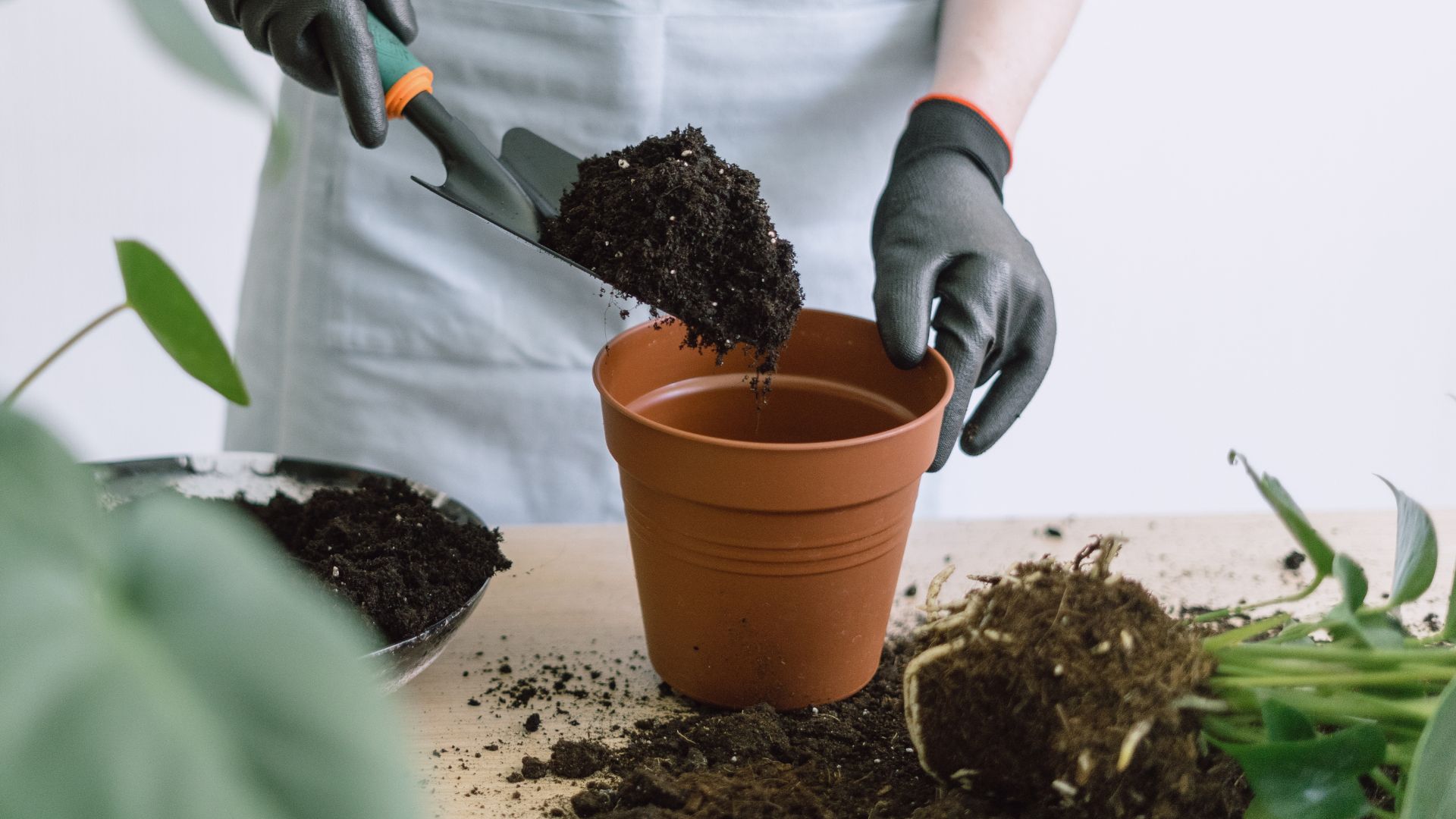
In the same way, it's important to know your soil type for your outdoor plants, ensuring you've filled your pot with the right type for your houseplants is key.
Petar says, "Use a well-draining potting mix, such as one made for houseplants, enriched with peat moss or coconut coir. Feed monthly during spring and summer with a diluted, balanced liquid fertiliser and avoid over-fertilizing, which can burn roots."
Feeding and watering your plants will change depending on season, how you care for houseplants in winter is vastly different than how you should in the summer months.
4. Check the humidity levels are adequate
As the prayer plant is native to Brazil its required conditions need to mirror that. And whilst you might be trying to reduce the humidity in your home, your prayer plant will need a different eco-system of its own.
"The best temperature for a prayer plant is between 18 – 28 degrees Celsius. They also enjoy high humidity levels. Bathrooms or kitchens are ideal locations due to the higher humidity levels. Keep the plant away from cold draughts," explains Fiona.
It can be a good idea to keep plants that prefer higher humidities together, that way you're not making more rooms in your home humid when you don't need to.
5. Know when and how to repot the plant
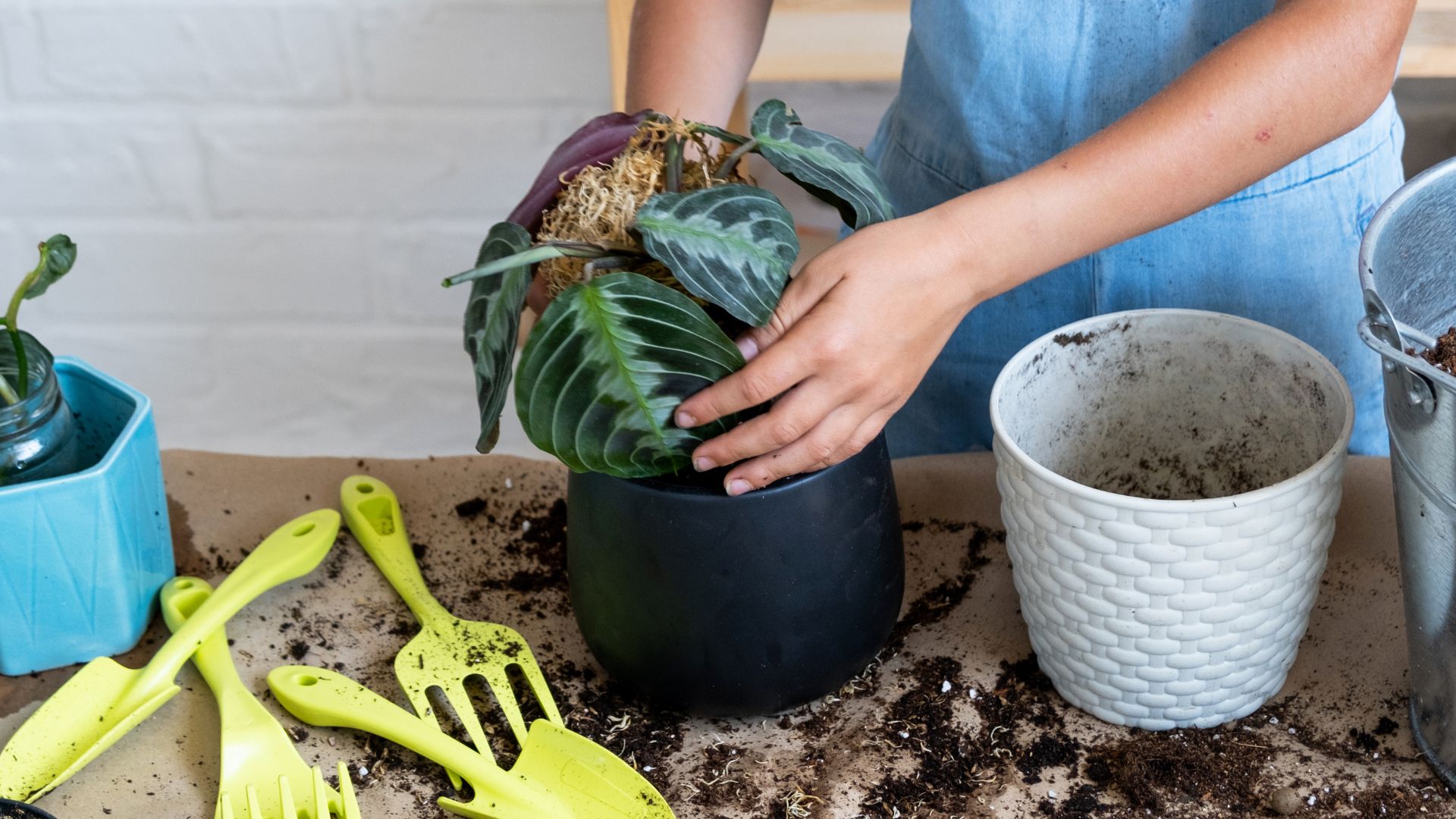
Whilst you might think that knowing how to repot a plant is more important, we'd actually argue that knowing when to repot a plant is higher on the priority list. Repotting a plant too prematurely can be extremely damaging to its health.
Fiona says, "The best time to re-pot a prayer plant is in spring or early summer. Fill the new pot with a layer of fresh potting mix. Gently remove the plant from its current pot. Loosen the root ball and remove any excess soil. Position the plant in the centre of the new pot, ensuring that it is at the same depth as it was in the old pot."
She also explains that choosing the right type and size of pot is key too. Fiona says, "When choosing a pot for the prayer plant, choose one that is slightly larger than the current pot. A pot that is too large could lead to overwatering and root rot.
"Terracotta pots are a great choice as these allow excess moisture to evaporate. Plastic pots can also work well as they retain moisture better. Well-draining potting mix is crucial for a healthy prayer plant," she adds.
6. Protect the plant from pests and diseases
Unfortunately, it's not just your outdoor plants that can get overrun with creepy crawlies. In fact, your plants can be the source of your tiny black flies in the home problem.
"Spider mites, mealybugs, and aphids are common, so use neem oil or insecticidal soap to treat infestations. Some of the possible diseases include root rot from overwatering or poor drainage and leaf spot diseases caused by over-misting without good airflow," explains Petar.
FAQs
How to propagate a prayer plant
Looking to maximise your plant collection? Propagation and cuttings are some of our favourite sustainable gardening ideas both inside and outside.
Graham points out that prayer plants can be propagated by the division method and can be done when you're repotting the plant in springtime.
He says, "Gently pull apart the root ball with your fingers, and a clump from the side should come away by itself without needing to be forced. Check that each side clump that you are using has a part of the root system attached. If the clump does not come away by itself, you can cut it off with a clean knife."
Once you've done this repot the clump into fresh compost and into pots that are slightly larger than the new rootball of the old plant.
How do I know if my prayer plant is happy?
Our plants usually tell us when we need to give them a little more attention and care. Whether they start to grow mould on their topsoil or begin drooping, there's always a telltale sign they're unhappy.
"A happy prayer plant will have deep, rich green leaves with distinct markings. The leaves should be smooth, velvety, and free from any spots or blemishes. You should notice new leaves emerging regularly," explains Fiona.
"The plant should show its signature ‘prayer’ movement by raising its leaves at night and lowering them during the day. It’s not common for a prayer plant to flower indoors. However, if your prayer plant does flower, this is a sign of optimal growing conditions," she adds.
It's always a good idea to give your plant an inspection every time you water it, just to make sure you're not missing any small signs of distress.
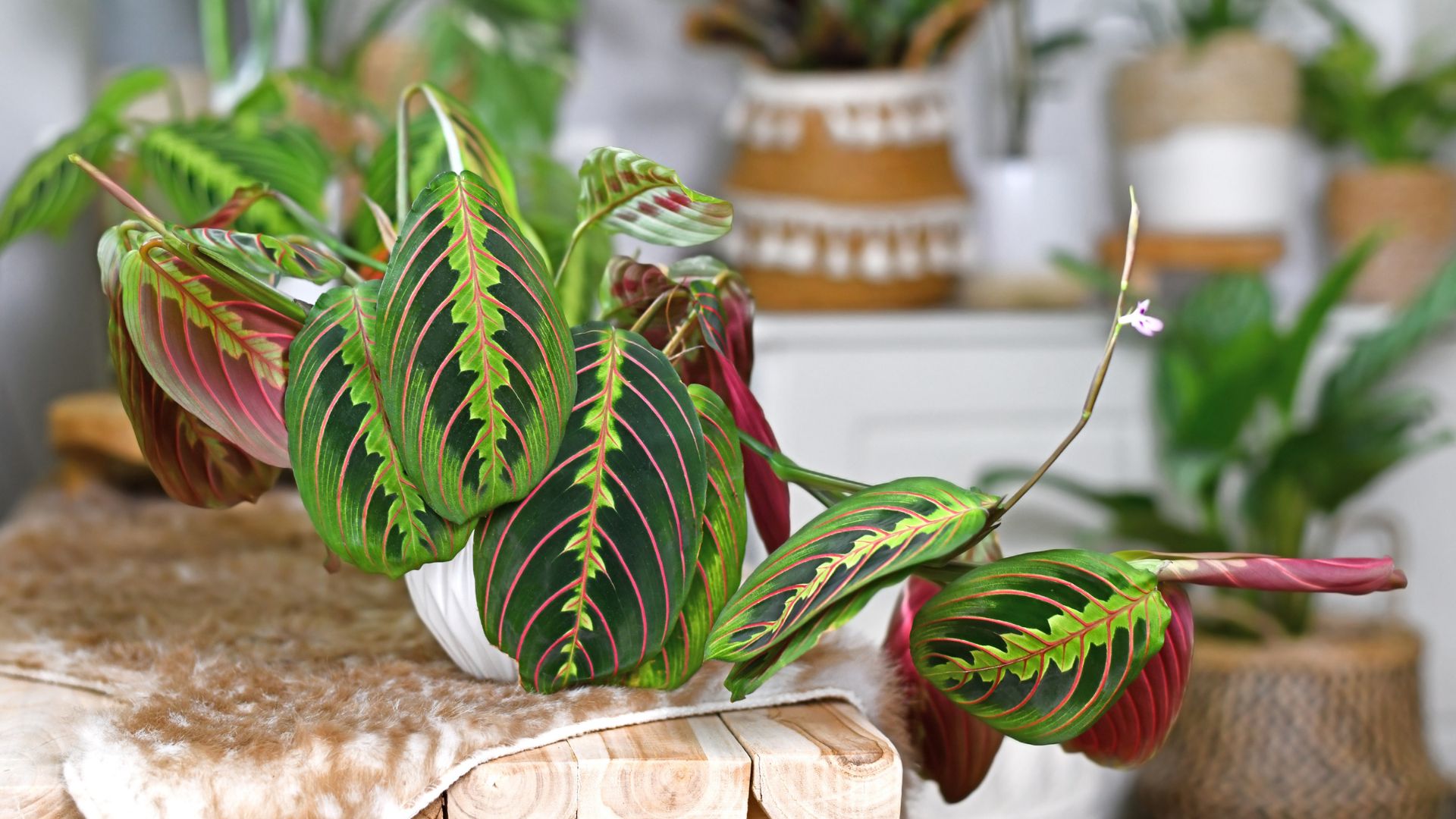
Do prayer plants have a winter domancy period?
It's no secret that our plants are reactive to the change in seasons and sometimes need a little helping hand to survive more extreme temperatures. Prayer plants are not exempt from this.
"Prayer plants don’t go truly dormant in the winter. However their growth will slow down significantly," explains Fiona.
"During winter, reduce the frequency of watering. Overwatering can lead to root rot, so make sure you let the soil dry out between waterings. If your home’s humidity is low, consider using a humidifier to keep the air moist. Mist the plant regularly to increase the humidity," she adds.
In the same way you protect plants from the frost outdoors, your houseplants will need not only a different care routine but also a more thorough one.
The experts are also quick to point out just how important it is to clean your plant's leaves properly. Because a prayer plant has extremely reactive leaves that adore sunshine it's important to keep them dust-free and unclogged.







